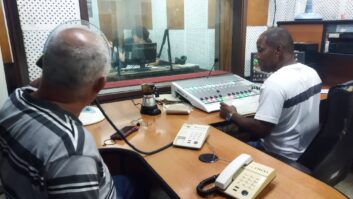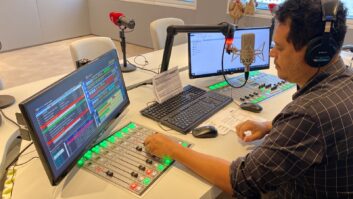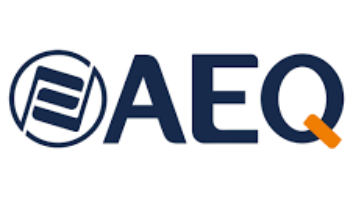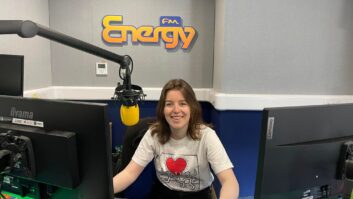LISBON, Portugal — TSF is a Portuguese FM radio station that counts on a great network of international correspondents and covers all of Portugal.
The rapid spread of AoIP distribution systems opens new paths for audio distribution for broadcasters: it reduces required wiring and makes operation simpler, but even in that case, it is not a good idea to completely renounce the advantages of former TDM bus-based systems.

TSF has certain specific technical requirements due to its news and talk programming format. So when its new Program Production Center engineering planning was started, a system combining both technologies was proposed to take advantage of strengths of each and salvage what had been installed.
There already was a Dante-based intercom system serving the editorial office and news production. This was linked to a redundant TDM bus-based matrix combining and routing the production studios and radio broadcasting circuits.
In addition, a VoIP-based telephone and talk show system had been integrated, featuring two AEQ SysTel IP 12 devices, which provided flexible and economical communications along with the station’s on-air calls.
Outside contribution came via installed AEQ Venus 3 AoIP audio codecs.
Both on-air studios are equipped with 15-fader AEQ Arena consoles. The audio engine frames are located in the Technical Center and are connected to the matrix using 64 AoIP channels with AES/EBU backup.
To send microphone audio and receive the returns to each headphone, two new AEQ Netbox 4 MH AoIP interfaces have been installed in each of these studios.
All three control PCs have AoIP input/output capability and are backed up in AES/EBU for security.
There are four production control rooms equipped with AEQ Capitol consoles. The audio engines are located in the Technical Center. Each core links 16 channels with the matrix through the AoIP network.
In order to send microphone audios and receive the returns for each headphone at each studio, each of these control rooms has a Netbox 4 MH AoIP interface. Each control room PC is equipped with AoIP input/output.
There are five recording, editing and voice over booths. A PC with AoIP capability is installed in each one of these cabins together with a Netbox 4 MH AoIP interface.
Program and return channels are backed up using AES/EBU links in Central Control and also through a Netbox 8 AoIP terminal. Also in this area, the emergency playout system can be found. It would be used in the unlikely event that all redundant signals from Central Control fail.
The intercom system is installed in most of the technical rooms: controls, studios, technical center, booths and also on the editorial rooms. That’s why it required a dedicated installation. This system includes 64 AoIP channels.
AoIP technology has made possible the integration of all devices and systems within TSF’s Technical Center. The six engine frames of the audio consoles for the studios and control rooms can be found there.
The main elements in this new Technical Center are two AoIP-connected matrixes: CrossNet intercom matrix, and an AEQ BC-2000C TDM bus-based matrix for audio switching and distribution with AoIP interfaces, as well as AEQ Netbox 32 AoIP interface devices.
As noted, in the Technical Center, AEQ Arena and Capitol IP audio engines can be found, both of them featuring AoIP network connectivity.
Besides the broadcast hardware, the network also offers Dante interfaces for production PCs.
This centralized installation has provided great savings in facility wiring since all the devices are located in the same place. These systems have been wired to a new audio switching and distribution system that allows any connected signal to reach any destination easily using control interfaces that may be located in the Technical Center, the studios or even in a remote, internet-connected location. Maintenance tasks are reduced as they can be remotely managed without technicians needing to travel to the Program Production Center.
The main and novel aspect is the implementation of a mixed topology where an AoIP network is unified, made more flexible and rendered processing capabilities whereas all the audio signals are routed through TDM-bus based matrixes.
For information, contact Peter Howarth with AEQ in Florida at (800) 728-0536 or visit www.aeqbroadcast.com.











